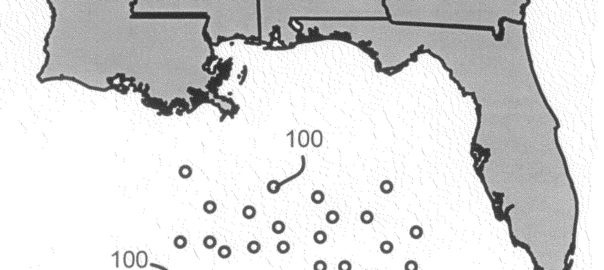But mental and political borders hinder Salter Sink deployments
The year 2020 has many claims to infamy. Of course there is the emergence of Covid-19, and unprecedented threats to U.S. democracy. But if that weren’t enough, let’s discuss the hurricanes. This year we had so many strong tropical storms in the Atlantic Ocean, we needed to move from proper names to Greek letters. According to NOAA:
This is the fifth consecutive year with an above-normal Atlantic hurricane season, with 18 above-normal seasons out of the past 26.
Record-breaking Atlantic hurricane season draws to an end, NOAA.gpv
We can blame — at least in part — climate change. This Economist cover article about our warming planet is accompanied by one of the best data visualizations I’ve ever encountered. Atlantic hurricanes gather their force from extremely warm surface temperatures. Eighty degrees Fahrenheit is the magic number needed to birth one of these devastating storms.
Many ideas have been tried to cool things down and otherwise disperse hurricanes. But there is one that shows dual promise: An invention by University of Edinburgh professor emeritus Stephen Salter could relatively cheaply take the wind out of hurricanes while also oxygenating the warm seawater. This second feature is promising because as seas warm, they hold less oxygen, creating dead zones such as the one in the Gulf of Mexico. Dead zones kill fish and other important marine life.
The invention is called a Salter Sink. It was created within Intellectual Ventures, a technology firm led by former Microsoft CTO Nathan Myhrvold. It was through Myhrvold that I first heard of the hurricane-fighting concept. The idea is surprisingly simple, and in many respects low-tech.
Imagine a plastic grocery bag the size of an athletic stadium. The mouth of this “sink” is kept circular, and at the surface of the sea, by employing a rigid lip and inexpensive floats. The bottom of the sink is also open, and has weights to make it stay well below the water’s surface. Unlike the top, the bottom opening has a valve mechanism. Water can flow down and out, but not back in and up.
When waves crash over the lip, warm water is pushed downward. That mixes the water with a much cooler layer. Over time a Salter Sink will replace warm surface water with cooler water that hurricanes hate and fish love.
To be effective, the U.S. would need to deploy thousands of these devices, out in deep water, and tether them to anchors or drone-like devices that would counter tidal drifting. The illustration at the top of this is from the patent application, showing where they could be placed to be most effective.
Mental and Political Borders
Estimates are that their deployment would cost somewhere near a billion dollars, and in their first year alone could save tens or even hundreds of billions in property damage and citizen displacement. This doesn’t include the seemingly inevitable loss of life that comes with a devastating hurricane.
So why aren’t we trying Salter Sinks?
I suspect the problem is a combination of mental laziness and opposition to government spending that could be targeted as wasteful or considered in part aid to neighboring countries. (Remember that threat to our democracy I mentioned at the top? It comes with populism that reasons, weirdly, that anything we spend taxpayer money on should only benefit the U.S.)
If I’m right, it’s a paucity of both imagination and generosity that will keep us bailing out hurricane-devastated regions of the U.S., year after tragic year, instead of investing far less money in prevention.
I’m reminded of that old joke, “Everyone complains about the weather. But do you hear about anyone doing something about it?”
In this rare instance, our country actually could.
